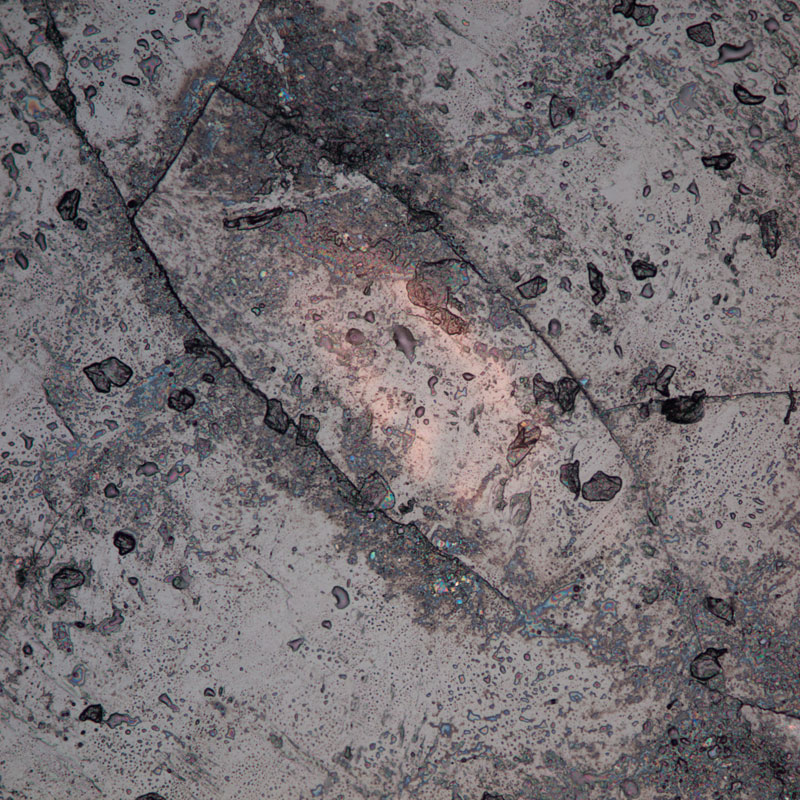 Our experience of light is rather simple —we shine light on something and we can see what it looks like. Shining it from one side or the other does not seem to change the object’s inherent appearance, but just the shading. One of the neat things about microscopes is because they work at such small scales and with very controlled illumination that they can reveal light’s complex nature.
Our experience of light is rather simple —we shine light on something and we can see what it looks like. Shining it from one side or the other does not seem to change the object’s inherent appearance, but just the shading. One of the neat things about microscopes is because they work at such small scales and with very controlled illumination that they can reveal light’s complex nature.
This image is of a tourmaline crystal. The microscope technique is known as a brightfield, meaning if the light striking the sample is not altered by it, you will see an even white field of light. But, because of scattering, absorption, and shifts in phase, the sample modifies the light, decreasing intensity, resulting in an image. This light is parallel to the optical axis. Now, if I took this light and shone it from the side, you would expect a similar result with a few more shadows.
 Yet, that is not what happens. Technically, this technique is call darkfield, where light unaltered by the sample never enters the optics, creating a field of darkness. What you see it the light that is modified by the sample, increasing intensity to create an image. Neither of these images reflect our non-microscopic view of this crystal, which is black like a piece of coal. Our normal vision under the messy uncontrolled conditions around us cannot see the properties of light that are apparent under a microscope.
Yet, that is not what happens. Technically, this technique is call darkfield, where light unaltered by the sample never enters the optics, creating a field of darkness. What you see it the light that is modified by the sample, increasing intensity to create an image. Neither of these images reflect our non-microscopic view of this crystal, which is black like a piece of coal. Our normal vision under the messy uncontrolled conditions around us cannot see the properties of light that are apparent under a microscope.
Light has another property: it is polarized, meaning it not only vibrates like a sound wave, but that vibration can be up and down, left or right, or in any aspect in between. A linear polarizer lets light vibrating in one particular direction pass, blocking the rest. If we take a second polarizer and rotate it ninety degrees to the first, it should block the polarized light passing through the first. But objects can affect the polarization of light.
 This is the same crystal between two linear polarizers. The material and the damage of the material change the polarization, allowing light to pass the second polarizer. This not only increases intensity to form an image, but also alters color.
This is the same crystal between two linear polarizers. The material and the damage of the material change the polarization, allowing light to pass the second polarizer. This not only increases intensity to form an image, but also alters color.
All of these images are optical—Photoshop is not needed here. If you look through a microscope, you experience the same thing. Light is pretty amazing. Click on the images for a larger view.
